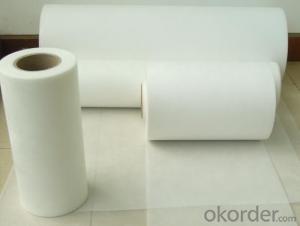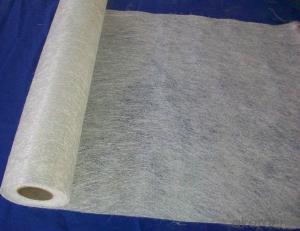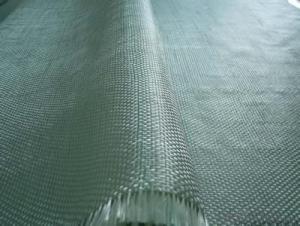Fiber Glass Surface Tissue Mat Low Binder Content
- Loading Port:
- China Main Port
- Payment Terms:
- TT or LC
- Min Order Qty:
- 2000kg kg
- Supply Capability:
- -
OKorder Service Pledge
OKorder Financial Service
You Might Also Like
Description
Surfacing Tissue mainly used in the surface layers of FRP products. It features even Fiber distribution, soft feel, level and smooth fiber surface, less glue content, quick resin soak and good pattern fitness. It can improve the product surface property on corrosion resistance, compressive strength, seepage resistance, and longer service life. It is also suitable for spraying; pattern pressing and other FRP pattern technology.
Product Features:
● Fast breakdown in styrene
● Fiber dispersed evenly
● Low binder content
● Superior acid corrosion resistance
Specifications
| item | unit | scc20w | scc30w | scc30w |
Area weight | g/m2 | 20 | 30 | 50 |
| binder content | % | 7 | 6 | 6 |
| tensile strength MD | N/5cm | ≥20 | ≥25 | ≥40 |
| soaking time | S | ≤8 | ≤10 | ≤16 |
| moisture content | % | ≤0.2 | ≤0.2 | ≤0.2 |
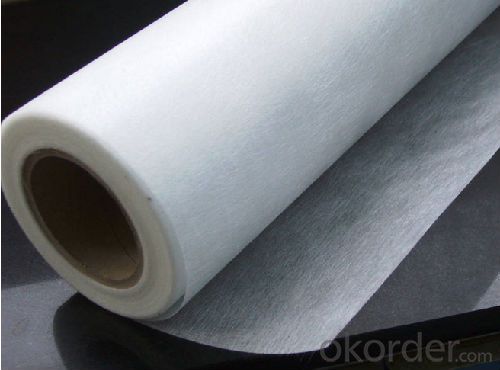
Product packaging:
Each Surface Tissue is wound onto a paper tube which has an inside diameter of 76mm and the mat roll has a diameter of 330mm. The mat roll is wrapped up with plastic film,and then packed in a cardboard box or wrapped up with kraft paper. The rolls can be vertically or horizontally placed. For transportation, the rolls can be loaded into a cantainer directly or on pallets.
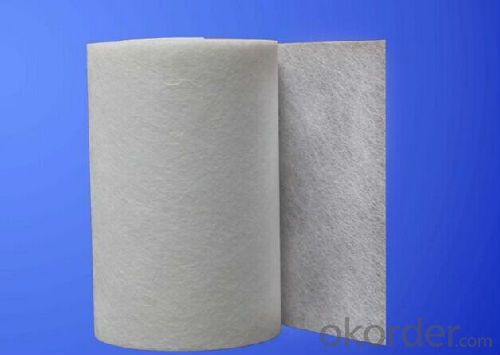
FAQ:
1.What is the delivery time ?
15days after receiving the deposit
2.Are you a trading company or factory.
We are factory,and we have more than 10 years of experience.
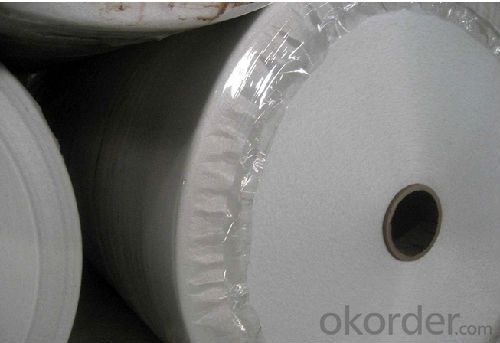
- Q:How do fiberglass fabrics perform in terms of chemical resistance?
- Fiberglass fabrics have excellent chemical resistance properties, making them highly resistant to a wide range of chemicals. They can withstand exposure to acids, bases, solvents, and other corrosive substances without significant degradation or damage. This makes fiberglass fabrics a suitable choice for various applications where chemical resistance is critical, such as in the manufacturing of protective clothing, chemical storage tanks, and filtration systems.
- Q:How does fiberglass fabric compare to other types of fabrics?
- Fiberglass fabric stands out from other types of fabrics due to its unique properties. It is highly durable, fire-resistant, and can withstand extreme temperatures. Additionally, it is lightweight, flexible, and offers excellent insulation properties. However, fiberglass fabric is less comfortable compared to natural or synthetic fabrics, and it may be less breathable. Overall, its exceptional strength and resistance make it a preferred choice for applications requiring high-performance fabrics.
- Q:Is fiberglass fabric resistant to chemicals in agricultural applications?
- Generally, fiberglass fabric exhibits resistance to chemicals in agricultural applications. Its exceptional chemical resistance is well-known and makes it suitable for a variety of industrial and agricultural uses. It can withstand exposure to a wide array of chemicals, such as acids, alkalis, solvents, and commonly used agricultural pesticides. This chemical resistance guarantees the durability and functionality of fiberglass fabric in agricultural settings, even when it comes into direct contact with potentially corrosive substances. Moreover, fiberglass fabric also possesses resistance to UV radiation, moisture, and extreme temperatures, thereby further enhancing its suitability for agricultural applications.
- Q:Can fiberglass fabric be used for insulation in food processing plants?
- Yes, fiberglass fabric can be used for insulation in food processing plants. Fiberglass fabric is a versatile material that offers excellent thermal insulation properties. It can effectively trap heat and prevent heat loss, making it suitable for insulating various areas in food processing plants where temperature control is critical. Additionally, fiberglass fabric is resistant to moisture, chemicals, and fire, making it a safe and durable option for insulation in food processing environments. However, it is important to note that the fiberglass fabric used should be food-grade and comply with relevant health and safety regulations to ensure it does not contaminate the food or pose a risk to human health.
- Q:How is fiberglass fabric used in the production of protective clothing?
- Due to its unique properties that offer excellent protection against various hazards, fiberglass fabric is commonly utilized in the manufacturing of protective clothing. The fabric is created by weaving fine strands of glass together, resulting in a material that is both strong and durable. One of the main applications of fiberglass fabric in protective clothing is its fire-resistant capabilities. With a high melting point, the fabric is ideal for safeguarding workers from flames, sparks, and extreme heat. It functions as a barrier, preventing the clothing from catching fire and reducing the likelihood of burns. Additionally, fiberglass fabric exhibits resistance to chemicals and corrosive substances, making it suitable for protective clothing in industries where workers may come into contact with hazardous materials or acids. The fabric acts as a protective layer, preventing these substances from penetrating through to the skin and causing harm. Furthermore, fiberglass fabric boasts high resistance to abrasion and tearing, making it an excellent choice for protective clothing in industries where workers may encounter rough or sharp materials. By acting as a barrier against cuts, scrapes, and punctures, the fabric helps to prevent injuries. Moreover, fiberglass fabric is lightweight and breathable, allowing for comfortable wear over extended periods. It does not trap heat or moisture against the body, reducing the risk of heat stress or discomfort. This is particularly important for workers who are required to wear protective clothing for long hours. In conclusion, the utilization of fiberglass fabric in the production of protective clothing is attributed to its fire-resistant, chemical-resistant, and abrasion-resistant properties. By providing a reliable barrier against various hazards, it ensures the safety and well-being of workers in industries where protective clothing is necessary.
- Q:How is fiberglass fabric used in the production of aircraft interiors?
- Fiberglass fabric plays a crucial role in the production of aircraft interiors, as it offers numerous benefits and properties that make it an ideal material for this application. One of the primary uses of fiberglass fabric in aircraft interiors is for the construction of panels and partitions. Fiberglass fabric is known for its exceptional strength-to-weight ratio, which makes it a perfect choice for creating lightweight yet durable panels. These panels are used to divide the aircraft cabin into different sections, such as the cockpit, passenger area, and lavatories. The lightweight nature of fiberglass fabric helps reduce the overall weight of the aircraft, which in turn improves fuel efficiency and enhances the aircraft's performance. Another key advantage of fiberglass fabric is its fire resistance. Aircraft interiors need to comply with stringent fire safety regulations, and fiberglass fabric is inherently fire-resistant, making it a preferred material for constructing wall and ceiling panels. In the event of a fire, fiberglass fabric will not contribute to the spread of flames, providing valuable time for passengers to evacuate safely. Fiberglass fabric is also utilized in the production of aircraft seats and upholstery. Its high tensile strength makes it suitable for seat covers, ensuring longevity and resistance to wear and tear. Additionally, fiberglass fabric can be treated to be water-resistant, making it easier to clean and maintain, an essential factor in the aviation industry where hygiene and cleanliness are of utmost importance. Furthermore, fiberglass fabric is often used in the production of aircraft insulation and soundproofing materials. Its excellent thermal and acoustic insulation properties help maintain a comfortable cabin temperature and reduce noise levels, enhancing the overall passenger experience. In summary, fiberglass fabric is an integral part of aircraft interior production due to its lightweight, fire-resistant, and durable characteristics. Its versatility extends to the construction of panels, seats, upholstery, insulation, and soundproofing, contributing to the safety, efficiency, and comfort of modern aircraft interiors.
- Q:How is fiberglass fabric used in the production of fire-resistant curtains?
- Fiberglass fabric is used in the production of fire-resistant curtains due to its high heat resistance and non-flammable properties. It acts as a barrier against flames and helps prevent the spread of fire, providing a safety measure in case of emergencies.
- Q:How is fiberglass fabric used in the production of thermal curtains?
- Due to its unique properties and benefits, fiberglass fabric is commonly utilized in the manufacturing of thermal curtains. One of its notable attributes is excellent insulation, making it an ideal material for thermal curtains. By acting as a barrier against heat transfer, the fabric helps maintain a consistent temperature indoors. In the production of thermal curtains, fiberglass fabric often serves as a lining or interlining. It is positioned between the decorative outer fabric and the inner lining of the curtain, providing an additional layer of insulation. This layer effectively prevents heat loss during winter and heat gain in summer. Moreover, fiberglass fabric is lightweight and flexible, facilitating easy handling during the manufacturing process. It can be effortlessly cut, sewn, and tailored to fit curtains of various sizes and designs. Furthermore, its durability ensures that thermal curtains made with fiberglass fabric withstand frequent use while maintaining their insulating properties over time. Additionally, fiberglass fabric is fire-resistant, enhancing the safety of thermal curtains. This property plays a crucial role in preventing the spread of fire and safeguarding occupants during emergencies. Overall, fiberglass fabric is an indispensable component in the production of thermal curtains. Its insulation, lightweight nature, flexibility, durability, and fire resistance make it an ideal choice for creating curtains that effectively regulate temperature, conserve energy, and enhance comfort in residential and commercial spaces.
- Q:What are the different fiberglass fabric coatings for weather resistance?
- Some different fiberglass fabric coatings for weather resistance include silicone coatings, polyurethane coatings, acrylic coatings, and vinyl coatings. These coatings help to provide protection against moisture, UV rays, and other environmental elements, enhancing the durability and longevity of fiberglass fabric in various weather conditions.
- Q:Are fiberglass fabrics suitable for use in the mining industry?
- Yes, fiberglass fabrics are suitable for use in the mining industry. They are known for their high strength, durability, and resistance to heat, chemicals, and corrosion, making them ideal for various applications in mining such as conveyor belts, protective clothing, insulation, and filtration systems. Additionally, fiberglass fabrics offer excellent electrical insulation properties and can withstand harsh environmental conditions commonly encountered in mining operations.
1. Manufacturer Overview |
|
|---|---|
| Location | |
| Year Established | |
| Annual Output Value | |
| Main Markets | |
| Company Certifications | |
2. Manufacturer Certificates |
|
|---|---|
| a) Certification Name | |
| Range | |
| Reference | |
| Validity Period | |
3. Manufacturer Capability |
|
|---|---|
| a)Trade Capacity | |
| Nearest Port | |
| Export Percentage | |
| No.of Employees in Trade Department | |
| Language Spoken: | |
| b)Factory Information | |
| Factory Size: | |
| No. of Production Lines | |
| Contract Manufacturing | |
| Product Price Range | |
Send your message to us
Fiber Glass Surface Tissue Mat Low Binder Content
- Loading Port:
- China Main Port
- Payment Terms:
- TT or LC
- Min Order Qty:
- 2000kg kg
- Supply Capability:
- -
OKorder Service Pledge
OKorder Financial Service
Similar products
New products
Hot products
Hot Searches
Related keywords

